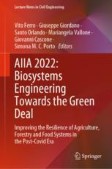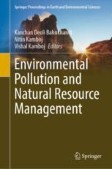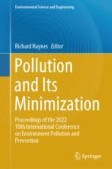Search
Search Results
-
Screen for low-arsenic-risk rice varieties based on environment–genotype interactions by using GGE analysis
Arsenic (As) accumulation in rice is a global health concern that has received increased attention in recent years. In this study, 12 rice genotypes...

-
Multi-location evaluation of field pea in Indian climates: eco-phenological dynamics, crop-environment relationships, and identification of mega-environments
Characterization of crop-growing environments in relation to crop’s genotypic performance is crucial to harness positive genotype-by-environment...

-
Multivariate analysis of morpho-physiological traits in Amaranthus tricolor as affected by nitric oxide and cadmium stress
Edible amaranth ( Amaranthus tricolor L.) is used as a food-medicine or ornamental plant, and despite its importance, there are few reports associated...

-
Characterizing plant trait(s) for improved heat tolerance in field pea (Pisum sativum L.) under subtropical climate
Field pea is highly sensitive to climatic vagaries, particularly high-temperature stress. The crop often experiences terminal heat stress in tropical...

-
Comparative assessment on ammonia nitrogen adsorption onto a saline soil–groundwater environment: distribution, multi-factor interaction, and optimization using response surface methodology and artificial neural network
The adsorption of soil can reduce the leaching of NH 4 + -N from the external environment into groundwater. The adsorption of NH 4 + -N is affected by many...

-
Application of stable isotope of water and a Bayesian isotope mixing model (SIMMR) in groundwater studies: a case study of the Granvillebrook and Kingtom dumpsites
The increase in groundwater salinity of the two major dumpsites in Sierra Leone has been a major concern for stakeholders. Therefore, this study...

-
Using Multiple Correspondence Analysis to Evaluate Milking Parlour Performance
Modern milking parlours allow the automated collection of many data for each cow being milked that can potentially be used to monitor the overall...
-
Landside sensitivity model creation based on SMCA-GIS with verification of point coordinate variation
The primary goal of the present study was to use Spatial Multi-Criterion Analysis (SMCA) management based on the integration of Analytical...

-
Assessment of Water Quality and Biodiversity Status of Alaknanda River at Garhwal, Uttarakhand: A Case Study
Biotic and abiotic factors of a river compel an aquatic ecosystem, these factors are interrelated with each other. A healthy freshwater ecosystem...
-
Human Health Risk Assessment for Toxic Chemical Pollutants in Urban Stormwater
Accurate and efficientHuman health risk assessment of toxic chemical pollutants present in urban stormwater is essential for safely utilizing this...
-
Assessment of Physiochemical Parameters and Bioremediation of Complex Contaminated Yamuna River, India: An Algal-Based Approach
In India, rivers are the primary source of water for millions of people. However, inadequate wastewater management and excessive dum** of...

-
Microbial Communities in Dark Fermentation, Analytical Tools to Elucidate Key Microorganisms and Metabolic Profiles
Hydrogen production from dark fermentation (DF) is a viable option for valorizing organic waste and agro-industrial effluents. Fermentative bacteria...
-
Hydrodynamics and water quality of a highly anthropized wetland: the case study of the Massaciuccoli basin (Tuscany, Italy)
Owing to increasing anthropogenic impacts, wetlands have suffered a serious environmental decline in recent decades. The sustainable management of...

-
Green Infrastructure, Urban Heat Islands and Human Well—Being in the City of Metropolitan Lima
The objective of this research is to evaluate the mitigation of heat islands considering green infrastructure and ecosystemic services, the lack of...
-
Performance, Adaptability and Stability of Promising Bread Wheat Lines Across Different Environments
Adaptability and stability are important indicators in light of climate change in the world, especially in the Mediterranean region. Therefore, eight...
-
Distribution pattern, population structure and habitat geography of Betula utilis subalpine forests of Kashmir region in the western Himalayas: implications for conservation and sustainable management
Betula utilis is the keystone tree species constituting the basic structure of the western Himalayan subalpine forests in Kashmir regions. It is...

-
Approaches in Sesame to Mitigate Impact of Climate Change
Environmental stress adversely affected growth and yield parameters of sesame. Components of genotype by environment interaction are an important...
-
Industry mimetic isomorphism and sustainable development based on the X-STATIS and HJ-biplot methods
Based on both neo-institutional theory and comparative institutional analysis, this paper studies the role that mimetic forces play in the patterns...

-
Unraveling the response of water quality and microbial community to lake water backflowing in one typical estuary of Lake Taihu, China
To investigate the effect of lake water backflowing on the aquatic ecosystem in the estuary, surface water samples in the backflowing and...

-
Spatial Variability and Data Analysis in Urban Soils
Urban soils are likely to be even more variable than soils in other environments, due to the inherent heterogeneity of urban environments which...
